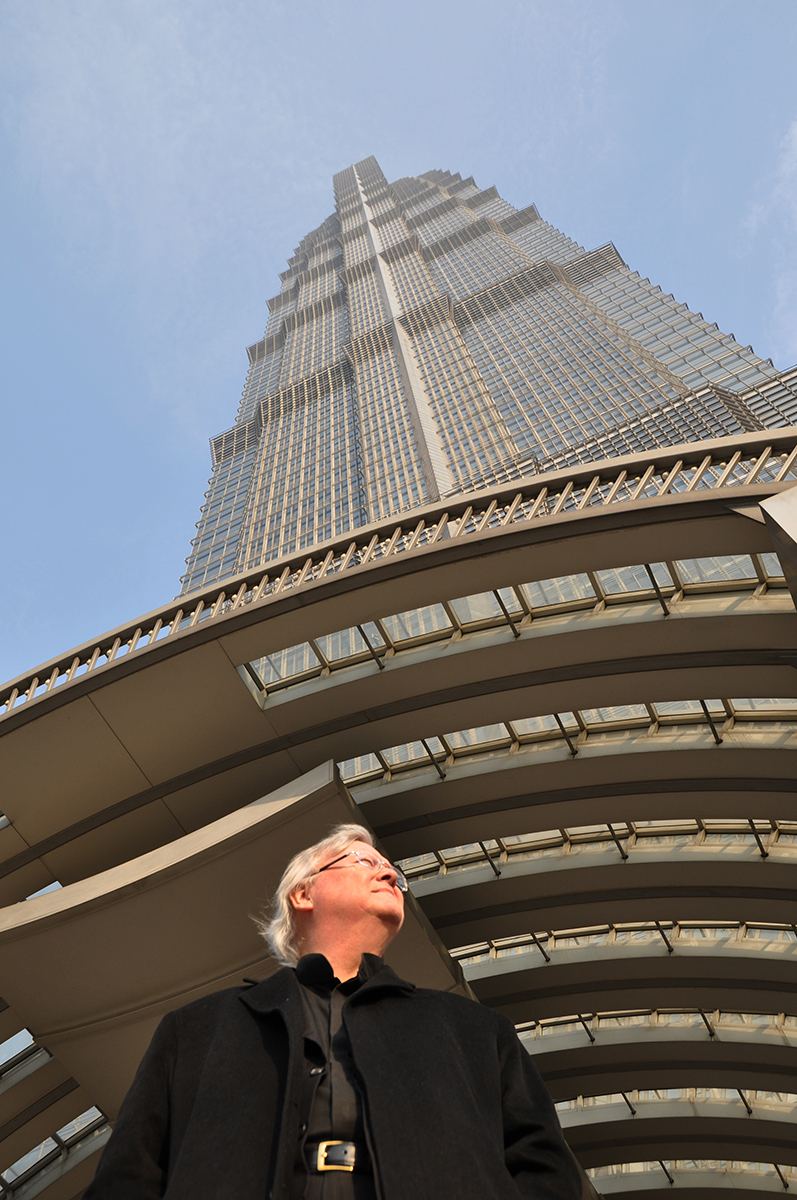7 nov 16 | World Architecture News
Jin Mao Tower, Shanghai, China: A towering achievement
By Nick Myall
Jin Mao Tower Architect, Adrian D. Smith reflects on the building’s legacy and the significance of the number eight to the project…
As Shanghai’s Jin Mao Tower approaches its 20th anniversary, Adrian D. Smith, Design Partner for the project at SOM in Chicago, reflects on the legacy of China’s – and his own – first supertall tower. Jin Mao Tower’s recent accomplishments and designations support the building’s reputation as one of the most treasured buildings in China.
“In March 1993, we were visited at SOM (Skidmore, Owings & Merrill) in Chicago by the client so that they could introduce the project competition to us and ask us if we had any questions,” says Smith, currently Design Partner of Adrian Smith + Gordon Gill Architecture. “I asked why they wanted an 88-storey building. Why not two buildings on the site, say a 50-storey office and a 38-storey hotel, instead of a tall mixed-use building? After all, it would be less expensive and faster to construct.”
The question may sound odd coming from the current leading expert on supertall towers, but in 1993 Smith had yet to design a supertall tower, which is defined as being a building over 300m tall.
“The client told us that they wanted an 88-storey tower because eight is the luckiest number in China; the pronunciation of the word for ‘eight’ sounds very much like the pronunciation of the word for ‘prosperity’ in Chinese,” says Smith.
The client’s reasoning spoke to Smith: “I had long been interested in the cultural aspects of an architectural site,” says Smith. “My design philosophy, Global Contextualism, explores the use of vernacular and indigenous forms, integrating new buildings into a regional context.”
Smith also adds, “Once we learned the importance of the number eight, it became intriguing to weave elements of it into the design. It was never a restriction because we didn’t let it govern any design decisions. The elements of the building that worked best in conjunction with eight came very naturally, such as the octagonal core, the eight main super-frame columns, and the eight-sided exterior at the top.”
The client also expressed an alternate reason for the 88-storey project. In 1988, Chinese statesman Deng Xiaoping stood on the Jin Mao Tower site in the Pudong District – when he was 88 years old – and declared it to be the location of the future of Chinese business and commerce. Compared with the density of the Pudong District of 2016, it is hard to imagine the landscape as it was in the late 1980s and early 1990s: no tall buildings, with industrial shipyards and wharfs dominating the landscape.
Knowing that the building would be the central focal point of the new Pudong District, Smith says, “I wanted to design an iconic landmark tower created specifically for the site; for China – a building that could only be in China, so I designed it to be evocative of a traditional pagoda,” says Smith. “But I reinterpreted it with contemporary technology and building materials including aluminium and stainless steel cladding. No actual pagoda ever looked anything like Jin Mao.”
Topped in August 1998, Jin Mao Tower has received numerous awards and recognitions since its inception. In 2013, Jin Mao became the tallest and longest-operating building in China to receive a LEED-EB: OM (Existing Buildings: Operations + Management) Gold certification. Jin Mao’s top conservation strategies have included reusing or recycling 70% of all durable goods and the diversion of 70% of the waste accumulated from facility alterations and additions.
Partially due to this certification, in 2014, Jin Mao Tower was the finalist for the CTBUH Performance Award. The building maintains its commitment to ongoing key performance indicators through energy-consumption analysis meetings, which are held each month by building facility managers to clarify energy expenditures of water, electricity, and natural gas. By comparing annual and monthly consumption statistics with the building’s automation system’s daily control log, they decide where energy-saving strategies should be implemented.
Most recently, in 2016, Jin Mao Tower was honoured as one of the 98 architectural masterpieces in China that was designated a National Heritage site. This heritage designation list was the first to include 20th-Century architecture. Additionally, Jin Mao Tower received the 2016 CITAB-CTBUH China Tall Building Legacy Award, which recognizes the proven value and performance of buildings over 10 years old.
Jin Mao Tower has also become deeply rooted in Shanghai’s pop culture. It is a well-known site for adrenaline fanatics who have done everything from climb the tower with no ropes to BASE jump with several people at a time. In an effort to help the public experience the dazzling building, on July 28, 2016 Jin Mao Tower opened an official skywalk along the outside of the 88th floor. It is the highest exterior, fenceless, transparent walkway on a high-rise building in the world, rising 340m above the ground.
“The tower speaks to Shanghai and the whole of China,” says Smith. “Many buildings are relatively forgotten about after they have reached several years old. But Jin Mao’s legacy is going strong. It’s one of my favourite completed projects and I’m proud to see it getting the recognition that it deserves.”
